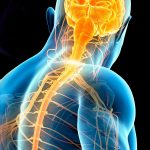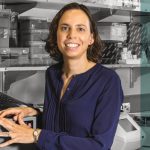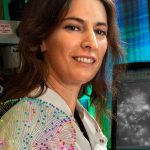FedEx, UPS, DHL—when it comes to sending packages, choices abound. But the most important delivery service you may not have heard of? mRNA. That’s how your DNA sends blueprints to the protein-assembly factories of your cells. Inder Verma and first author Suvasini Ramaswamy, along with industry collaborators, reported the successful treatment of hemophilia B in mice using mRNA to deliver instructions for the clotting protein that is defective in the debilitating bleeding disorder. The therapy, which was described the week of February 13, 2017, in Proceedings of the National Academy of Sciences, is a proof of concept that mRNA therapy could be applied to a range of genetic diseases.
Read News ReleaseGenetics
Finding our way around DNA
Most of us would be lost without Google maps or similar route-guidance technologies. And when those mapping tools include additional data about traffic or weather, we can navigate even more effectively. Salk team develops tool that maps functional areas of the genome to better understand disease.
Similarly, Joseph Ecker, first author Yupeng He and collaborators have developed a computational algorithm that integrates two different data types to make locating key regions within the genome more precise and accurate than other tools. The method, detailed during the week of February 13, 2017, in Proceedings of the National Academy of Sciences, could help researchers conduct vastly more targeted searches for disease-causing genetic variants in the human genome, such as ones that promote cancer or cause metabolic disorders.
Read News ReleaseSalk scientists expand ability of stem cells to regrow any tissue type
When scientists talk about laboratory stem cells being totipotent or pluripotent, they mean that the cells have the potential, like an embryo, to develop into any type of tissue in the body. What totipotent stem cells can do that pluripotent ones can’t do, however, is develop into tissues that support the embryo, like the placenta. Salk Professor Juan Carlos Izpisua Belmonte, along with first author Jun Wu and researchers from China’s Peking University, discovered a chemical cocktail that enables cultured mouse and human stem cells to generate both embryonic and extra-embryonic tissues. Their technique, described in the journal Cell on April 6, 2017, could yield new insights into mammalian development that lead to better disease modeling, drug discovery and even tissue regeneration.
Read News ReleaseIdentical twins; not-so-identical stem cells
In a study published in Cell Stem Cell in April 2017, senior author Juan Carlos Izpisua Belmonte and collaborators have shed light on a longstanding question about what leads to variation in stem cells by comparing induced pluripotent stem cells (iPSCs) derived from identical twins. Even iPSCs made from the cells of twins, they found, have important differences, suggesting that not all variation between iPSC lines is rooted in genetics, since the twins have identical genes. The findings help scientists better understand the processes involved in reprogramming cells and the differences between iPSCs and ESCs (embryonic stem cells). The work could also lead to improvements in the way iPSCs are being used for research and therapeutics.
Read News ReleaseNovel tool confers targeted, stable editing of epigenome in human stem cells
The lab of Juan Carlos Izpisua Belmonte has developed a novel technology to correct disease-causing aberrations in the chemical tags on DNA that affect how genes are expressed. These types of chemical modifications, collectively referred to as the epigenome, are increasingly being considered as important as the genome itself in development and disease. In the May 4, 2017, issue of Science the team described how they used the tool to model mutations in tags associated with colon cancer and to restore the proper tags in stem cells derived from people with Angelman syndrome.
Featured Stories
 Untangling the mysteries of the spinal cordConverging research and innovative technologies are tackling some of the deadliest motor diseases.
Untangling the mysteries of the spinal cordConverging research and innovative technologies are tackling some of the deadliest motor diseases. An interview with Diana HargreavesInside Salk talked with Hargreaves about why she prefers smaller intellectual environments, what excites her about the science she does at the Institute, and how she thinks about being a woman in science.
An interview with Diana HargreavesInside Salk talked with Hargreaves about why she prefers smaller intellectual environments, what excites her about the science she does at the Institute, and how she thinks about being a woman in science. Delving into the best of both worlds with Shani SternAs the only electrophysiologist in the lab, Stern uses her engineering expertise to delve into the biological mysteries that most intrigue her, particularly bipolar disorder.
Delving into the best of both worlds with Shani SternAs the only electrophysiologist in the lab, Stern uses her engineering expertise to delve into the biological mysteries that most intrigue her, particularly bipolar disorder.
















































